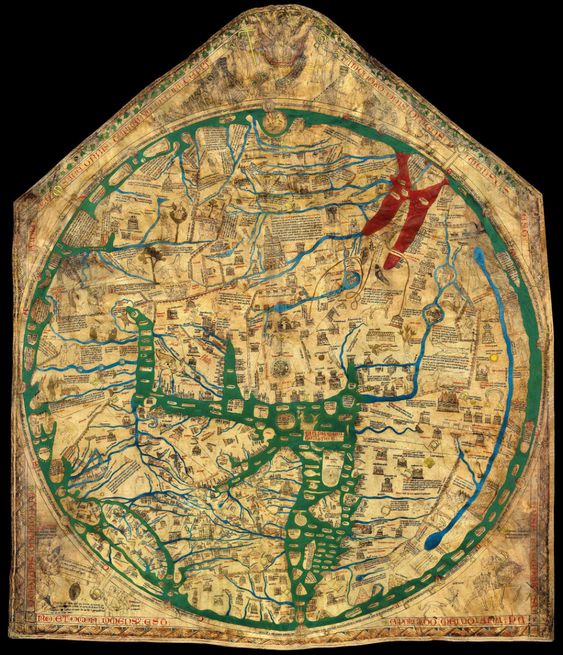Mappa Mundi: Skyla Investigates Part III
This historical nuggets will be relating to the Mappa Mundi. More specifically, the one in the wonderful city of Hereford. Although I have lived in Hereford on and off for the past five years, I have never been into the Hereford Cathedral to see the Mappa Mundi! I know, I know, utterly ridiculous. I use working and lockdowns as my excuse. Hereford Cathedral is also important to our work as The Haunting of Hecate Cavendish features it heavily. Once again, I repeat, Hecate is coming out on the 23rd of July, so less than a few weeks to go! This also means that there will be lots more to come about the Mappa Mundi as it seems to be a very broad subject. I will be looking at the different types of maps and when they were made. Additionally, the Christianity and beliefs behind the images.
Overview of the Mappa Mundi
The Mappa Mundi in Hereford is the largest and most well preserved version of the map, sitting at 1.5 metres tall. Some accredit its sturdiness to the fact that the map is made of vellum, which is calf skin. It is also more durable due to it being on a single piece of vellum, with no attachments or seams. The ink used to draw the details of the map would have been a mineral based ink, making it natural and long lasting. There are approximately 1,100 Mappa Mundi to have survived from the Middle Ages. The Hereford map has not always held the title as the largest known Mappa Mundi. This title once belonged to the Ebstorf map which came in at a whopping 3.5 metres tall and wide. This gorgeous piece was unfortunately destroyed during the bombing in Hanover in 1943, passing it’s title to Hereford’s map.
History
To us twenty-first century folks, the maps may seem primitive and geologically inaccurate. Nevertheless, the maps are not designed to be used as navigational charts. They are more to show the principles such as Mythology and Religion that were known at the time. They focus heavily on Christianity but include other beliefs. Although the Christians themselves did not believe or follow Greek Mythology, they wanted to include aspects of it to show they are aware of different cultures. This seems surprisingly open minded! To understand Christian beliefs, it is important to compare it with other beliefs at the time. Paganism can be linked to the season of Easter. They would use hares and eggs as symbols in fertility celebrations during Spring each year. It is believed that a lot of Christianity can be linked to Pagan beliefs, as that was the current ‘normal’ around the time Christianity came into play.
Rounding off
As the different maps have been made over many different centuries, beliefs and focus points changed. Some of the older versions focus more of Ancient Greece, whereas the later ones have Jerusalem as a central focus. Wherever Jesus Christ is included in the Complex maps, he is detailed and large. Over time, the images of him shift and change depending on when the map itself was made. As someone who is surrounded by born and bred Herefordians, they are all very proud of this part of their culture and the title of ‘largest current Mappa Mundi on the planet’. I have only provided a small chunk of information about the Mappa Mundi and I definitely plan on delving into it more in the future. It is an interesting topic and I feel very privileged to live a ten minute walk away from such a revolutionary part of map making history.

